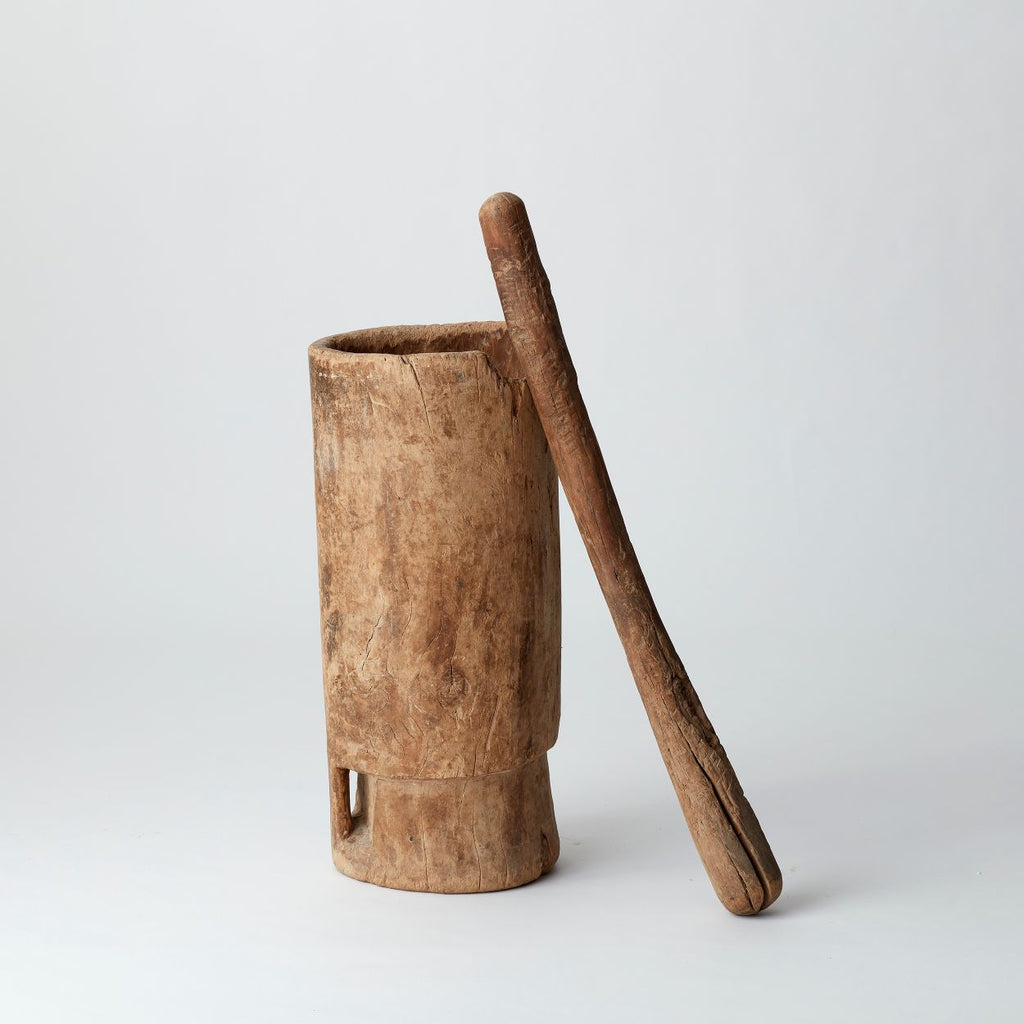The timeless power of the Pestle and Mortar
How this simplest of objects has had the power to span millennia transcending cultural barriers. The pestle and mortar is ubiquitous; found in every culture, its use can be traced back through each millennium. Evidence of its place in the lives of humankind dates back to Ancient Egypt and 1550BC, but it’s estimated that this simple yet highly functional tool was actually put to work more than 6000 years before the existence of the Pharaohs. Essential for preparing medicine in Roman times, the pestle and mortar was an early symbol for apothecaries or pharmacists. In Malay and West Asia, it’s still used today to grind meat, whereas in the Philippines its function continues as a rice de-husker.
The pre-Hispanic cultures of both the Mayan and Aztecs used the pestle and mortar to grind spices. Indeed, they’re still employed for exactly this task in modern day Pakistan and India. And it’s long been understood that in Papua New Guinea, pestles were carved into elaborate birds’ heads, whilst the Chalon and Mutsun peoples of California’s Salinas valley chiselled shallow depressions into bedrock in order to grind up their grains and acorns. Browse the Internet today and you will find numerous articles describing the best way to go about choosing the pestle and mortar ideal for your modern kitchen.
The longevity of the pestle and mortar’s design is astounding; it has changed very little over the course of thousands and thousands of years. From culture to culture, it has merely adapted in order to suit the materials to hand, the only caveat being that the user – whoever and wherever they were – must be able to crush and pound. And even though modern kitchens might have access to industrial grinders, many chefs prefer to use the traditional pestle and mortar to bring the best out of their ingredients; much like bread enthusiasts often choose to enjoy the immediacy of kneading dough by hand instead of machine. One place where the cuisine is just as diverse as the population is Africa. As varied as the food is over this vast continent, there’s a tool that is the common denominator: the pestle and mortar. Essential for preparing everything from staples to spice mixes, the use of the pestle and mortar was once so prolific that it was the custom in some West African cultures to give one to every new bride. Traditionally, the African mortar is a large, heavy vessel made of wood on a pedestal base. Between one and one and a half feet high, most have a diameter of between 24 and 30 inches.
The design of the pestle is a slender rod form with a ball-shaped end and therefore a larger surface area, thus making the grinding process less time consuming and more effective. Cleaning was simple: water, a clean rag and time to dry naturally. Modern technology has made the process of grinding easy and - on the African continent - food processors, blenders and powdered staples have all but rendered the need for this handcrafted tool redundant. Except for one thing: flavour. For a tool that predates agriculture, many have made the mistake of considering the pestle and mortar obsolete and inefficient. However, the pestle and mortar cannot be underestimated for its unrivalled ability to create rich, authentic aroma, taste and texture. Simple, organic and seemingly as old as time itself, it’s not very often that form and function come together to create such a joyous and long lasting union.
Continue reading
